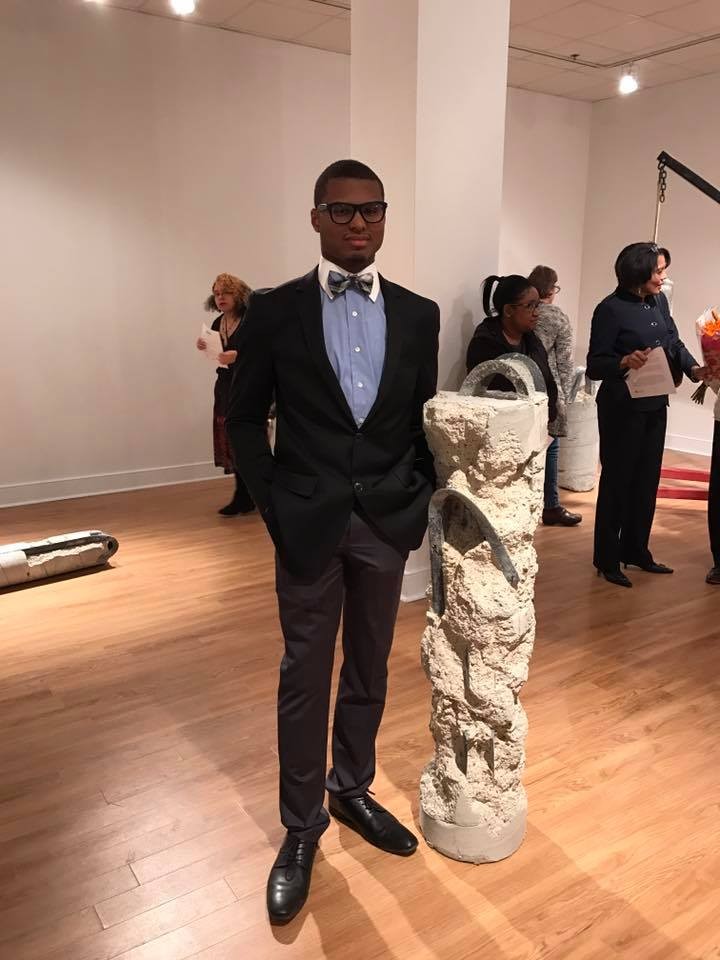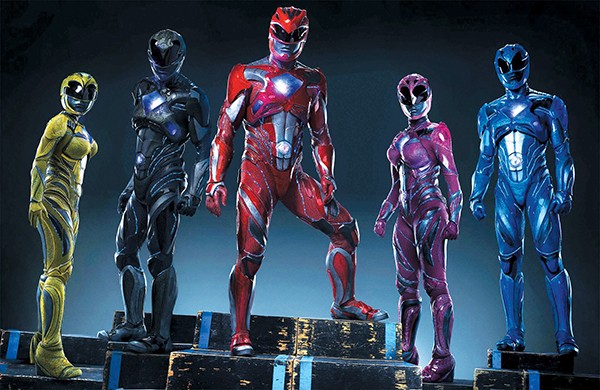
Today is the last day to see Desmond Lewis’ excellent exhibition “Heavy-Laden” at the Fogelman Galleries of Contemporary Art at the U of M.
Lewis’ work “explores the often-overlooked industrial contributions of African Americans in the construction of the United Stated over time and considers the metaphorical characteristics of the materials used.”
He took time out of his busy schedule to answer some questions for me. Here is part of that exchange.
Dwayne Butcher: Your MFA thesis exhibition is titled “Heavy-Laden” and explores the contributions of African Americans in the construction of the United States. How did you begin working on this project and what kind of research did you do to prepare for the exhibition?
Desmond Lewis: This project is a culmination of a very intimate relationship that I have developed throughout graduate school with steel and most recently, concrete. I make a metaphorical connection with the steel of industrial structures and the industrial labor that African Americans have been apart of in the United States. Steel is important in holding up a building yet it is covered by a concrete façade that has been heavily massaged to appear aesthetically pleasing. Thusly, the viewer fails to realize the importance of that central steel core that is truly holding up the building.
African Americans share a similar type of relationship like steel and concrete of buildings. African Americans have and continue to play an important part in contributing to the industrial construction of the United States yet their efforts are largely unnoticed. My work seeks to carve away at this façade to expose the steel that is crucial to the strength of the column. The intense commitment needed in working with steel and concrete as materials combined with the daily challenges of living as an African-American male in the United States led me to embark on this project. I feel safest in the studio from the racist ideologies of America, so I constantly pushed myself to pure exhaustion in making this work. Research wise, my thesis committee (Greely Myatt, Dr. Earnestine Jenkins, and Dr. Patricia Daigle) directed me to a variety of resources and concepts to prepare me in embarking on this massive scale of this project.
Were there any specific African Americans that you came across in your research that stood out for any particular reason? How did this impact your work?
Not so much specific persons as the general connection that African Americans have had with industrial materials from slavery to the present day. There were several scholars that I looked heavily at for inspiration such as Cornel West, Booker T. Washington, Dennis Dickerson (Out of the Crucible), Douglas Blackmon (Slavery By Another Name), and Michelle Alexander (The New Jim Crow). All of these scholars have written about or commented on the industrial contribution of African Americans to American society.


How did you first begin working with concrete and steel? Were you working with any tradition art materials before working with the industrial materials used in the exhibition?
Throughout graduate school, I worked with steel, as I love fabrication and the pure physical challenge. Concrete is a fairly recent inclusion in my work. I felt like the steel was missing something conceptually in my work so I started working with concrete. Steel is a traditional art medium in my opinion.
Has working on this exhibition led you to contemporary African-Americans artists who are thinking about the same things you are?
Theaster Gates is probably the closest artist that I can think of that is working on similar issues in a sculptural manner.
Who are other artists that you are looking at currently?
I look at a lot of artists mostly for insight on their process such as: George Smith, Theaster Gates, Melvin Edwards, Richard Hunt, Garry Bibbs, Jane Manus, and Bernar Venet.
Your thesis exhibition also includes a public work in the Orange Mound community. How did this project come about? Was it always thought of as something for your thesis exhibition?
The public work in Orange Mound came about after I completed a project in Soulsville in which I was able to see how a functional sculpture in a minority community could help an area. You can find murals all over Memphis in minority communities, but sculptures aren’t really prevalent in these areas.
While in graduate school, I did a lot of research about the history of Orange Mound and historical importance with African Americans. I felt like I needed to do something sculpturally in the area that is culturally rich but societally oppressed due to a variety of factors. I then met Linda Steele and she helped to make this a reality by finding a space and the finances for this project. It was always thought of as a part of my thesis exhibition as I knew that I wanted to focus on engaging steel and concrete with the community to no longer function as confining mechanisms for African Americans but provides a “value added” component to the community.
How did you get to the University of Memphis, where did you go to undergrad, and how has your time been in the MFA Program?
I finished undergrad at Tennessee State University. Immediately after undergrad, I started graduate school at MCA and then transferred to the University of Memphis in the spring of 2016. My time in the MFA Program has been life changing. I have had the chance to travel all over the country to attend conferences and exhibit numerous gallery and outdoor works. Additionally, I’ve been fortunate to work with some very amazing companies and organizations that ended up sponsoring my MFA Thesis Exhibition. The companies that sponsored my exhibition are West Memphis Steel, Orange Mound Gallery (Linda Steele and Paul Thomas), Tennessee Sling Center, Razorback Concrete, Williams Equipment and Supply, and MCR Safety.
What are your current short-term and long-term plans now that you are about to graduate?
I’m headed to the National Conference on Contemporary Cast Iron Art and Practices in Birmingham, Alabama, in a couple of weeks. I’m giving a presentation, exhibiting in the student exhibition, and competing in the Student Cupola Contest at the conference. After that, I received a scholarship to go to Haystack School of Crafts in Maine. I’m still searching for teaching jobs as well. The main focus of my work for at least the next year will be public sculptures for low income and minority areas. I plan to continue to exhibit a lot so that takes a lot of time with travel. As of March 1, 2017, I was in 6 shows, so I hope to hit my goal of 15 shows this year. I have only taken 2 days off from my practice in the last 4 years so I don’t anticipate me slowing down anytime soon. Also, I am working on finding a space to build a studio in Memphis where I will build my large-scale work. Even if move to get a teaching job across the country, I will commute to my large studio in Memphis at least once a month to continue that side of my practice. Long term, I’m only 23 so I’ll keep my options open.
What is it about Memphis that makes you want to have a studio here, even if you may leave for a teaching gig?
I think there is a lot potential in Memphis to do some great sculpture in underserved areas. Memphis also provides me with the opportunity to hire younger people that might have really challenging home situations to teach them new skills that may provide them with a new outlook on life. The city of Memphis is also centrally located to a lot of major cities within an 8-10-hour drive and is only 3 hours from Nashville where my major steel processor and family are. The central location of the city is fairly important to the continuation of my large scale sculpture practice.
Images Courtesy of the Artist.

 Micaela Watts
Micaela Watts 




 Draghicich | Dreamstime.com
Draghicich | Dreamstime.com  The Tennessean/The Commercial Appeal
The Tennessean/The Commercial Appeal 

